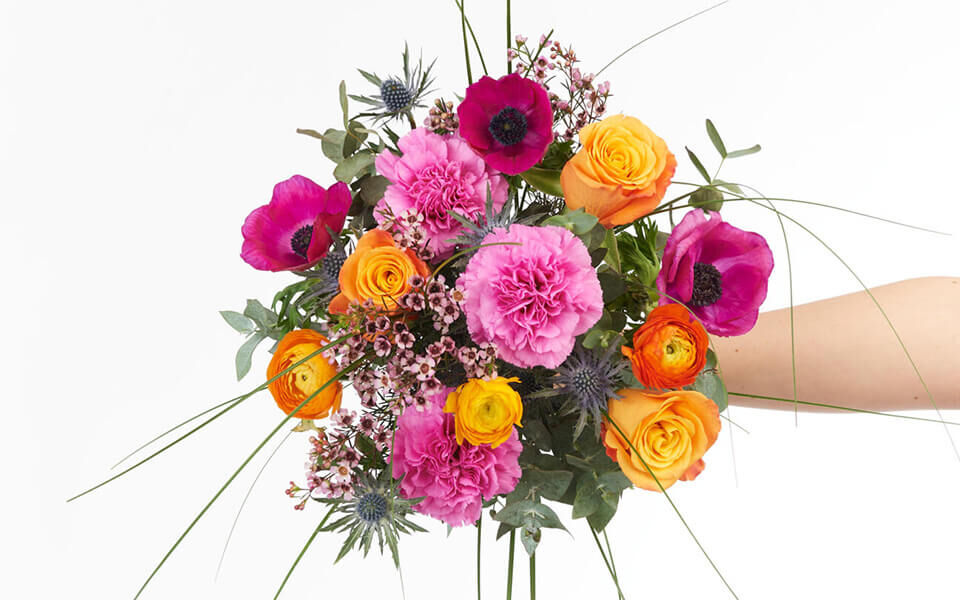Ranunculus

When spring unfurls its full splendour, the colourful ranunculus are in full bloom! From the end of April, the bulbous bloomers begin to add cheerful splashes of colour to the balcony or garden. If you want to shorten the waiting time until the planted ranunculus bloom, you can decorate your living room table with the delicate yet magnificent cut flowers in January.
The origin
It has been more than 500 years since the ranunculus (Ranunkulus asiaticus) arrived in Europe from the Orient and Central Asia. It is now one of the most sought-after cut and garden flowers, especially in the awakening spring. As a bulbous plant, the buttercup is perennial and relatively undemanding in terms of care and location. If you follow a few rules, you will be able to enjoy these colourful flowers for a long time.
Beauties in many colours
As magnificent as the begonia, as delicate as the peony - and the ranunculus is also available in many bright colours: the palette ranges from white, pale pink and yellow to orange, red and multi-coloured. The large-flowered, double varieties are particularly decorative. Ranunculus is characterised by its delicate petals that nestle closely together and become increasingly denser towards the centre in the shape of a cup. Incidentally, the name of the original marsh plant is derived from the Latin "ranunculus", which means "little frog".
Cheerful and colourful table decorations ...
Long before the first ranunculus are in full bloom in gardens and on balconies in May and June, you can bring their wonderfully bright colours into your home: As cut flowers for the vase, your florist will usually have the first specimens on offer from February. In some specialist shops, they have been on display in the shop window since January.
When buying ranunculus, you should make sure that the inner petals are still closed. "If the cut flowers are freshly cut every two days and not too deep in water that is always fresh, the ranunculus will keep for a good ten to 14 days," reveals Fleurop partner florist Christian Smedla from Blumenhaus Smedla. He also recommends preservative and, for flower arrangements, a wire to support the rather thin stems. Christian Smedla and his colleagues particularly like to use ranunculus in bridal bouquets and as table arrangements in spring: "The big advantage of this flower is that it goes great with both rustic and very elegant decorations," says the expert.
... and graceful garden flowers
From early summer, ranunculus look particularly beautiful in the garden - especially when planted in groups in different colours. The bulbs should be planted in a partially shaded spot, preferably in March. However, you can still give it a try at the beginning of April. Soak the bulbs in cold water for a few hours before burying them. Then place them pointing downwards about five centimetres deep in the prepared, humus-rich and well-drained soil. Leave a space of around 20 centimetres between each tuber when planting. Ranunculus should be protected from the last frosty nights and direct sunlight at midday. If necessary, spread some brushwood, peat, loam or grit (small pieces of wood) on the soil.
As soon as the first leaves sprout, ranunculus need plenty of water and some fertiliser. During the flowering period, they need moderate to plenty of water, depending on the location. Make sure that the soil is always moist but does not become waterlogged. To be on the safe side, you can add some gravel or sand to the soil when planting so that the water can drain away. Ranunculus reach a maximum height of 40 centimetres, making them ideal for beautifying balconies and terraces. Caution is advised at the first signs of slug damage, aphids and powdery mildew, as ranunculus are susceptible to these.














